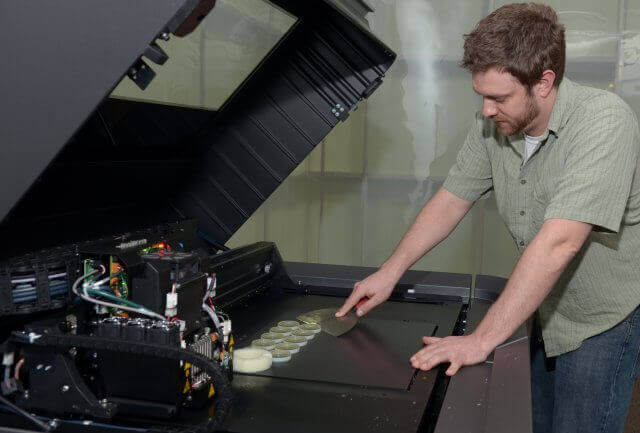The road to military 3d printing applications is not paved with flowers. Here are some considerations that currently hold army-3DP back.
While we’ve seen some amazing projects that apply or aspire to apply military 3D printing technologies in the army, there are still some serious considerations that need to be solved before we see anything 3D printed from/for the military. As experts currently point out in an article appeared on National Defense Magazine, this technology has the potential to “explode” but the challenges that need to be faced first are not for the faint-hearted.
Problem #1: Quality Certification
First of all, there is the problem of item quality certification. Most parts that the force envisions to produce using 3D printers are aimed at highly demanding applications that call for utmost dimensional, geometrical, and finishing qualities at very low tolerances. How can we certify drone wing parts that are printed on the go and on-board of a warship for example?
It is likely that failures of 3D printed parts could cause further damages besides financial losses, so this is a serious matter that is right now unsolved.
Problem #2: Legislative Issues
And then there are legislative issues that need to be addressed before printing anything for the military. What level of scanning and reverse engineering will be allowed to be done by non-military organizations? How can the army secure their designs from copycats? What are the implications of making something as generic as the 3D printing of army parts limited by legislation, and how can we keep the wide adoption of 3D printing unaffected by such limitations?
All these problems aren’t covered yet – it might take years until they are backed by laws.
Problem #3: Speed of Military 3D Printing

Even the most expensive additive manufacturing machine isn’t exactly fast. That’s especially true if you are aiming for high-quality parts. First of all, 3D printing can never be a replacement for traditional industrial manufacturing – and also, repeatability and reliability have to get better even with the best machines.
We stand at a point when 3D printing technology is approaching the necessary maturity for a widespread application so we have to develop methods and strategies to make it work for everyone. Some limitations can be overridden through the advancement of technologies (certification of parts) while others can be mitigated with the utilization of a legislative context (share and use permissions). Only time will tell what results each of these methods will yield, and how we’ll reach the most efficient and effective solutions to these newly arisen problems.
License: The text of "Military 3D Printing: These Are The Challenges" by All3DP is licensed under a Creative Commons Attribution 4.0 International License.